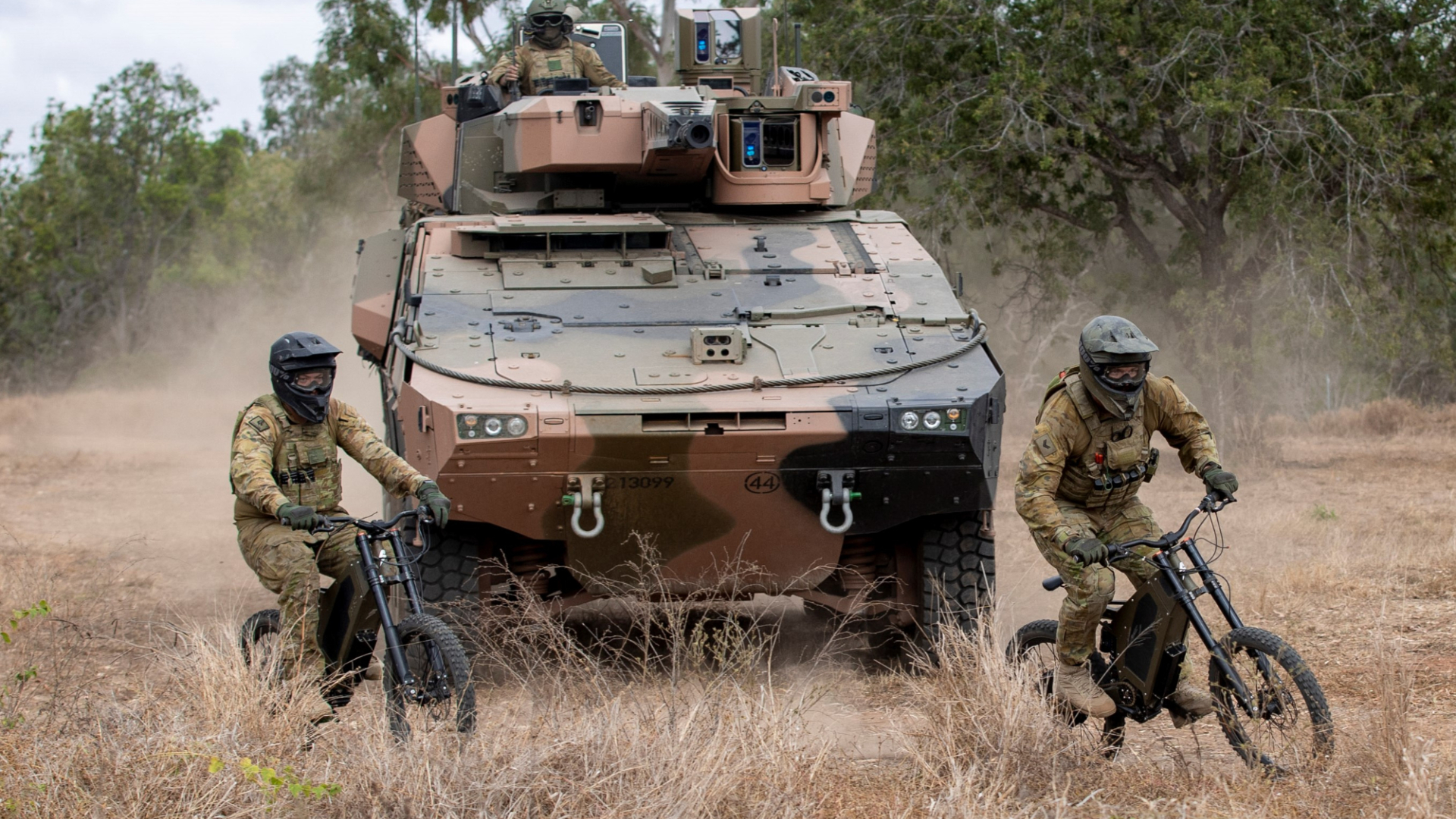Australian military are trialling stealth e-bikes on the battlefield
'We all join the army to find a little bit of excitement. This is one of those things about the job that’s exciting, fun and awesome.'

The Australian army are trialling the use of e-bikes in their training to improve their ability to scout for information at a quicker speed, while able to remain undetected.
The 2nd/14th Light Horse Regiment (Queensland Mounted Infantry) [2/14 LHR’s (QMI)] have pioneered the use of stealth reconnaissance e-bikes, after Corporal Thomas Ovey recognised the advantages they could provide soldiers when gathering information.
Moving quickly, the stealth reconnaissance bikes can reach a top speed of 90km/h and have a range of 100km. Crucially, they also remain under the 'detection threshold', usually deploying as a detachable element of the Boxer combat reconnaissance vehicle.
“It allows us to do safe-handing of information," Corporal Ovey said, "whether that’s information people have found on the battlefield, or even if one of the troops takes photos on their phone and wants to send it back to headquarters.
“They’ll call us up, we’ll get the stealth bikes out, head down there and grab the information. It’s a lot quicker.
“We cover more ground much faster, and it saves time instead of waiting for troops to come to us when they’ve found something. It’s easier to punch out the e-bikes and return.”
2/14 LHR’s (QMI) have been using the e-bikes in training exercises this year, and a trial report on the potential employment of their capability in the combat brigades will be provided by 2022.
Get The Leadout Newsletter
The latest race content, interviews, features, reviews and expert buying guides, direct to your inbox!
The e-bikes help during the regiment's reconnaissance work, sighting routes for the Boxer combat reconnaissance vehicle, such as through creek lines, to determine whether the routes are safe. Corporal Ovey also explains why the stealth reconnaissance e-bikes are superior to motor vehicles, such as motorbikes.
"The footprint is minimised due to less power, less noise, and you’re not kicking up much dust that could be seen by enemy forces. It’s much more effective than a standard motorbike.
"We all join the army to find a little bit of excitement. This is one of those things about the job that’s exciting, fun and awesome.”

Thank you for reading 20 articles this month* Join now for unlimited access
Enjoy your first month for just £1 / $1 / €1
*Read 5 free articles per month without a subscription

Join now for unlimited access
Try first month for just £1 / $1 / €1
Ryan is a staff writer for Cycling Weekly, having joined the team in September 2021. He first joined Future in December 2020, working across FourFourTwo, Golf Monthly, Rugby World and Advnture's websites, before making his way to cycling. After graduating from Cardiff University with a degree in Journalism and Communications, Ryan earned a NCTJ qualification to further develop as a writer.
-
 'It took everything' - Puck Pieterse outclimbs Demi Vollering to win La Flèche Wallonne
'It took everything' - Puck Pieterse outclimbs Demi Vollering to win La Flèche WallonneDutch 22-year-old shows Classics pedigree with first one-day victory
By Tom Davidson
-
 Tadej Pogačar flies to dominant victory at La Flèche Wallonne
Tadej Pogačar flies to dominant victory at La Flèche WallonneSlovenian takes second win at Belgian classic ahead of Kévin Vauquelin and Tom Pidcock
By Tom Thewlis